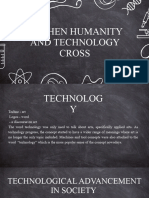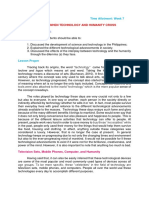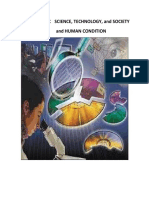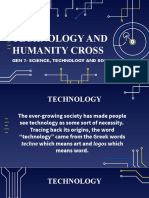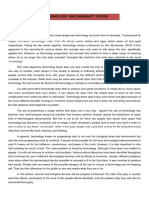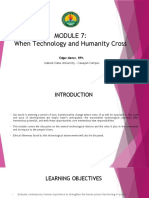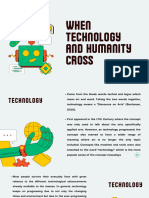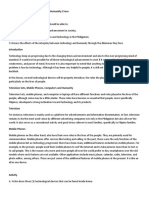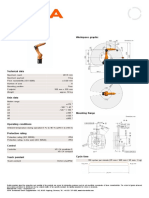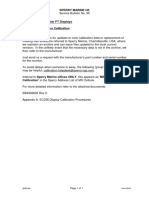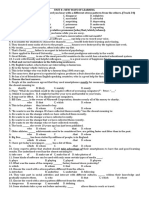0% found this document useful (0 votes)
96 views9 pagesSts Lesson 10 When Technology and Humanity Cross
The lesson discusses the intersection of technology and humanity, focusing on various technological advancements such as television sets, mobile phones, and computers, and their impact on society. It highlights the essential roles these devices play in daily life, as well as the ethical dilemmas they present, including concerns about health, morality, and safety. The document emphasizes the need for responsible use and awareness of technology's effects on individuals and society.
Uploaded by
9z7ydw8s2fCopyright
© © All Rights Reserved
We take content rights seriously. If you suspect this is your content, claim it here.
Available Formats
Download as PDF, TXT or read online on Scribd
0% found this document useful (0 votes)
96 views9 pagesSts Lesson 10 When Technology and Humanity Cross
The lesson discusses the intersection of technology and humanity, focusing on various technological advancements such as television sets, mobile phones, and computers, and their impact on society. It highlights the essential roles these devices play in daily life, as well as the ethical dilemmas they present, including concerns about health, morality, and safety. The document emphasizes the need for responsible use and awareness of technology's effects on individuals and society.
Uploaded by
9z7ydw8s2fCopyright
© © All Rights Reserved
We take content rights seriously. If you suspect this is your content, claim it here.
Available Formats
Download as PDF, TXT or read online on Scribd
/ 9




